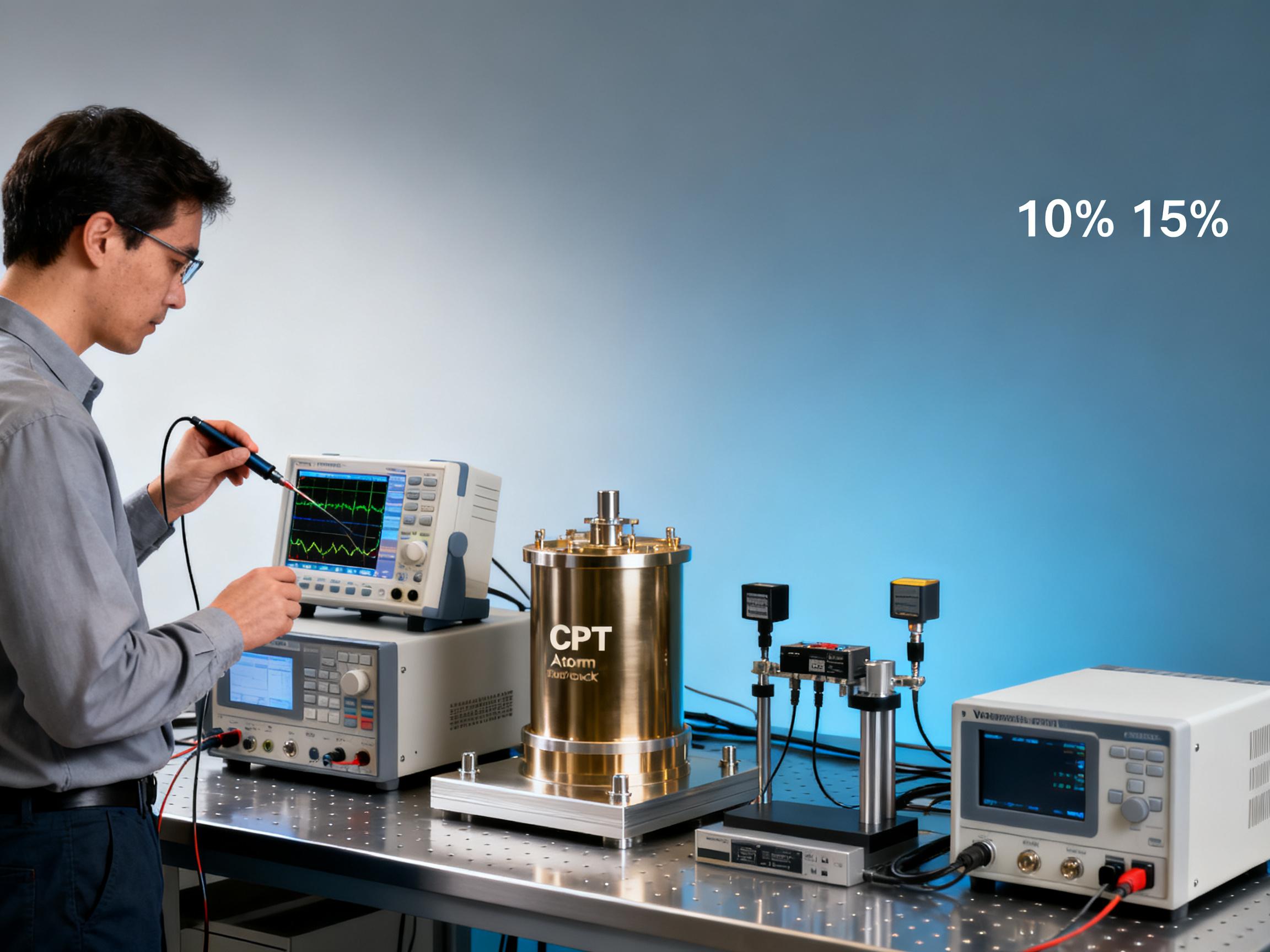RELATED
![How CPT Atomic Clocks Reduce OPEX in 5G Base Stations [Real Data] How CPT Atomic Clocks Reduce OPEX in 5G Base Stations [Real Data]](https://usimg.bjyyb.net/grey.png?x-oss-process=image/resize,m_fixed,w_800,h_600,limit_0) How CPT Atomic Clocks Reduce OPEX in 5G Base Stations [Real Data]2025-12-11
How CPT Atomic Clocks Reduce OPEX in 5G Base Stations [Real Data]2025-12-11 2024 CPT Atomic Clock vs Rubidium: Which Offers Better Stability for Telecom Networks?2025-12-08
2024 CPT Atomic Clock vs Rubidium: Which Offers Better Stability for Telecom Networks?2025-12-08 Live Demo Results: CPT Atomic Clock Performance Under Harsh Environmental Tests (Data Inside)2025-12-05
Live Demo Results: CPT Atomic Clock Performance Under Harsh Environmental Tests (Data Inside)2025-12-05 Budgeting for Precision: Total Cost of Ownership for a Rubidium Atomic Clock Over 5 Years2025-12-03
Budgeting for Precision: Total Cost of Ownership for a Rubidium Atomic Clock Over 5 Years2025-12-03
MESSAGE
Introduction: The Evolution of Precision Timing with CPT Atomic Clocks
In an era where microseconds can determine the success of critical operations, the demand for ultra-precise timing solutions has never been higher. CPT (Coherent Population Trapping) atomic clocks represent a quantum leap in timekeeping technology, offering unprecedented accuracy for industries ranging from satellite navigation to telecommunications. As a global leader in optical manufacturing and time-frequency solutions, we specialize in delivering cutting-edge atomic clock technologies that redefine reliability in spacetime infrastructure.
For technical evaluators and enterprise decision-makers, understanding the capabilities of CPT atomic clocks is essential when selecting systems that will form the backbone of mission-critical operations. Unlike traditional atomic clocks, CPT technology eliminates the need for physical microwave cavities, enabling more compact designs with lower power consumption while maintaining exceptional stability.
The Science Behind CPT Atomic Clock Technology
CPT atomic clocks operate on fundamentally different principles than conventional cesium beam or hydrogen maser clocks. The technology leverages quantum mechanical effects in alkali metal atoms (typically rubidium or cesium) when exposed to specific laser frequencies. By using two phase-coherent laser fields tuned to the atomic transition frequencies, CPT clocks create a quantum interference pattern that serves as an extremely stable frequency reference.
Key advantages of CPT technology include:
- Elimination of bulky microwave cavities, reducing size by up to 80% compared to traditional atomic clocks
- Dramatically lower power requirements (typically under 10W)
- Improved short-term stability (Allan deviation below 1×10-12 at 1 second)
- Faster startup times (reaching operational stability in minutes rather than hours)
For satellite atomic applications where size, weight, and power (SWaP) constraints are critical, CPT clocks offer an optimal balance between performance and practicality. Our Optical Pump Cesium Frequency Standard builds upon this foundation, delivering long-term stability comparable to laboratory-grade instruments in field-deployable packages.
Comparing CPT Clocks with Rubidium and Cesium Standards
Understanding the performance hierarchy of atomic frequency standards is crucial for selecting the right technology for specific applications. The table below provides a technical comparison between major atomic clock technologies:
For mobile and airborne applications where SWaP is paramount, CPT atomic clocks provide the best compromise between performance and portability. Our Rubidium atomic clock solutions remain popular for terrestrial applications requiring good medium-term stability with moderate size constraints, while Optical Pump Cesium Frequency Standards serve as the gold standard for fixed installations demanding ultimate precision.
Applications Transforming Industries
The implementation of advanced atomic clock technology is revolutionizing multiple sectors that depend on precise timing synchronization:
Satellite Navigation Systems: Modern GNSS constellations rely on networks of synchronized atomic clocks to provide positioning accuracy down to centimeter levels. Our CPT clocks are particularly suited for next-generation LEO satellite constellations where compact size and low power consumption are essential.
Telecommunications Infrastructure: 5G networks and beyond require timing accuracy at the nanosecond level to maintain synchronization across distributed antenna systems. CPT atomic clocks enable telecom operators to meet stringent phase synchronization requirements while reducing infrastructure costs.
Financial Trading Networks: High-frequency trading platforms utilize atomic clock synchronization to timestamp transactions with microsecond precision, ensuring compliance with regulatory requirements and maintaining fair market operations.
Scientific Research: From radio astronomy arrays to quantum computing experiments, research facilities depend on ultra-stable frequency references to coordinate distributed measurements and maintain coherence in quantum systems.
Implementation Considerations for Technical Teams
Deploying atomic clock technology requires careful planning to maximize performance and reliability. Our experience with hundreds of installations worldwide has identified several critical success factors:
Environmental Factors: While CPT atomic clocks are more resilient to environmental fluctuations than traditional standards, proper temperature control and vibration isolation still significantly impact long-term stability. Our engineering team can provide customized shielding solutions for challenging operating environments.
Synchronization Protocols: Integrating atomic clocks into existing timing networks requires compatibility with industry-standard protocols like PTP (Precision Time Protocol) and NTP (Network Time Protocol). Our systems support all major synchronization standards with configurable output formats.
Redundancy Strategies: For mission-critical applications, we recommend implementing redundant clock systems with automatic failover capabilities. Our modular designs allow for hot-swappable components to minimize downtime during maintenance.
Calibration Services: Regular calibration against primary frequency standards maintains timing accuracy over the operational lifespan. We offer both on-site and remote calibration services traceable to national metrology institutes.
Future Developments in Atomic Timekeeping
The frontier of atomic clock technology continues to advance rapidly, with several promising developments on the horizon:
Optical Lattice Clocks: Operating at optical rather than microwave frequencies, these next-generation clocks promise stability improvements of several orders of magnitude. While currently limited to laboratory environments, we're actively working on field-deployable versions.
Chip-Scale Atomic Clocks: Ongoing miniaturization efforts aim to integrate complete atomic clock functionality into semiconductor packages, potentially enabling widespread adoption in consumer electronics and IoT devices.
Quantum-Enhanced Timekeeping: Leveraging quantum entanglement and other non-classical effects could further improve clock stability while reducing sensitivity to environmental noise.
As these technologies mature, we remain committed to translating cutting-edge research into practical solutions that address real-world timing challenges across industries.
Conclusion: Building Your Precision Timing Infrastructure
CPT atomic clock technology represents a transformative advancement in precision timekeeping, offering unparalleled accuracy in compact, energy-efficient packages. Whether you're upgrading existing infrastructure or designing new systems from the ground up, selecting the right atomic frequency standard requires careful consideration of technical requirements, operational constraints, and future scalability.
Our team of time-frequency experts stands ready to help you navigate these decisions with customized solutions tailored to your specific needs. From initial consultation through deployment and ongoing support, we provide comprehensive services to ensure your timing infrastructure delivers reliable performance for years to come.
Take the next step in precision timing: Contact our technical sales team today to discuss how CPT atomic clocks can enhance your operations. Request a personalized consultation or download our detailed technical whitepapers to deepen your understanding of atomic clock technologies and their applications in your industry.
CONTACT US
Please use the form below to get in touch.
If you need a reply we will get in touch as soon as possible.

![How CPT Atomic Clocks Reduce OPEX in 5G Base Stations [Real Data] How CPT Atomic Clocks Reduce OPEX in 5G Base Stations [Real Data]](https://usimg.bjyyb.net/sites/91500/91958/1765179857856560163985903616.jpeg)



